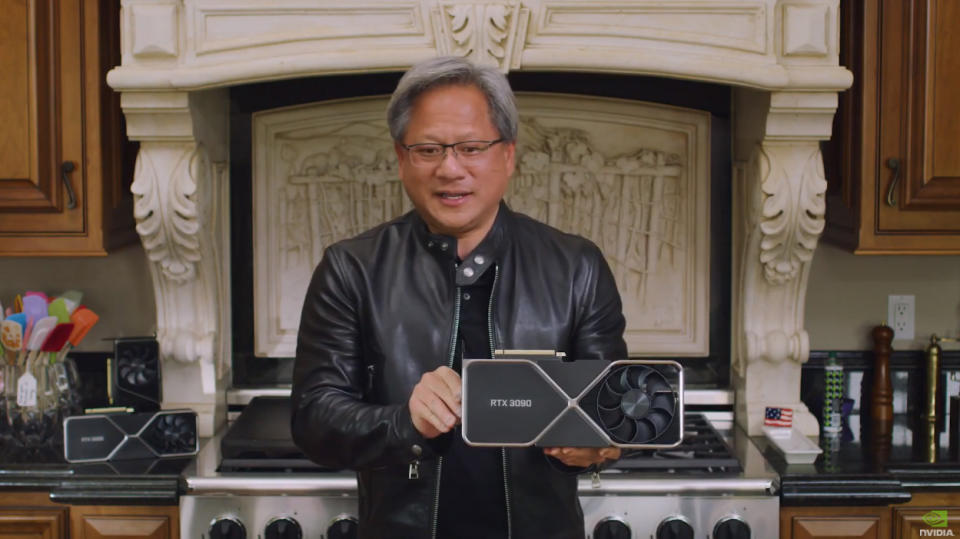Engadget has been testing and reviewing consumer tech since 2004. Our stories may include affiliate links; if you buy something through a link, we may earn a commission. Read more about how we evaluate products.
NVIDIA's GeForce RTX 3090 is a $1,499 GPU for 8K gaming
Meet NVIDIA's Titan killer.
NVIDIA has finally cracked 8K gaming with the RTX 3090, a massive $1,499 GPU featuring its next-generation Ampere architecture. The 3090 is so large it absolutely dwarfs the last-generation RTX 2080 Ti (NVIDIA CEO Jensen Huang seemed to have trouble just picking it up). The new GPU will take up a whopping three PCI slots, and it makes the most of NVIDIA’s new cooling solutions. But the real key is 8K gaming: the company says it’ll be able to play games beyond 60FPS at that insane resolution, thanks to the extra horsepower and its DLSS tech. If the 2080 Ti was a GPU hot rod, the 3090 is a monster truck that can better tackle real-time ray tracing.

NVIDIA says the RTX 3090 can reach 36 shader teraflops, compared to the RTX 2080 Ti’s 13.4 TFLOPs, and it’s also over 50 percent faster than the Titan RTX. It also packs 24GB of GDDR6 RAM, compared to the 2080 TI’s 11GB. That’s a massive amount of power, though it does make me wonder who this card is actually for. The 2080 Ti proved that consumers would jump at spending $1,000+ for the fastest GPU around, but 8K gaming is a bit of a meaningless milestone. 8K monitors don’t really exist, after all, and even 8K TVs don’t really make sense. The real reason you’d want one? Native 4K gaming with every real-time ray tracing effect turned on, as well as media rendering capabilities.
As rumored, the RTX 3090 arrives with a new 12-pin power connector. NVIDIA says this “allows more space for components and cooling,” and will be compatible with the 8-pin connectors found on modern power supplies via an included adapter. Its dual-axial cooler, which allows air to flow right through the card, is also up to ten times quieter and keeps the card up to 30 degree cooler than the Titan RTX, according to NVIDIA.
The 3090, like the cheaper 3080 and 3070, will be among the first GPUs to support HDMI 2.1. A common spec on modern high-end TVs, HDMI 2.1 allows for higher frame rates and resolutions than 2.0, such as 4K at 120 frames per second. The biggest feature for gamers, though, is built-in variable refresh rate support. This means that a supporting TV can behave similarly to a Freesync or G-Sync monitor, handling small variations to frame rate without visible stutter or torn frames.
The RTX 3090 will be available from September 24th. NVIDIA will sell the card directly as a founders edition, and names (deep breath) “ASUS, Colorful, EVGA, Gainward, Galaxy, Gigabyte, Innovision 3D, MSI, Palit, PNY and Zotac” as partners producing cards for the RTX 3000 series launch.

 Yahoo Lifestyle
Yahoo Lifestyle 
